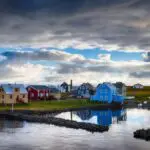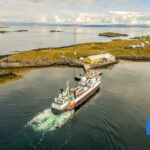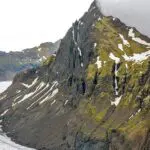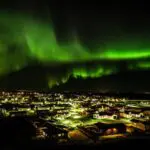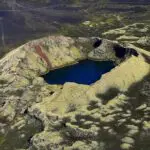In the summer of 1627, pirates from northwest Africa kidnapped people in Grindavik, The Westman Islands, and the East Fjords and sold them into slavery in Barbary. Barbary was a term used by Europeans from the 16th to the 19th centuries to describe the coastal regions of that country, which are now the states of Morocco, Algeria, Tunisia, and Libya. These abductions are called the “Turkish Abductions” or Tyrkjaránið.
There were two gangs, one from Algeria and the other from Sale (now in Morocco). Around 50 people were killed, and nearly 400 were kidnapped. A ransom was paid for 50 people nine to eighteen years later, most returning to Iceland.
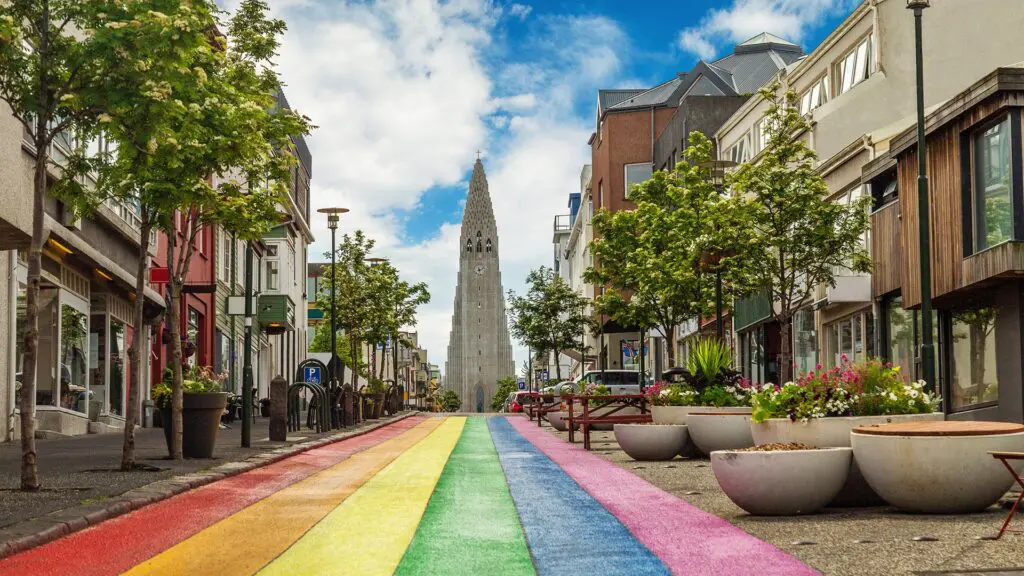
Guðrún Símonardóttir (who later married Hallgrímur Pétursson, after which Hallgrímskirkja church is named), priest Ólafur Egilsson, and Halldór Jónsson, later a lawyer, were among those kidnapped.
The event’s name does not refer to Turkey; at the time, the term “Turks” referred to all Muslims in the Mediterranean region, as the Ottoman Empire controlled most of those areas.
Jan Janszoon van Haarlem was a Dutch pirate who joined the Ottoman Empire’s service and was known as Admiral Murat Reis there. He was the first governor and grand admiral of the Moroccan city-state of Salè, whose port served as a hub for pirates raiding the surrounding waters. In 1627, Janszoon ordered a Danish enslaved person from his crew who had come to Iceland to steer his ship in areas no one had previously considered piracy. Another ship from Algiers set out on a raid to Iceland but arrived much later. It is unclear whether the ships formed an alliance or discussed the trip to Iceland before setting sail.
Murate Reis had turned to piracy after being taken captive by pirates sometime before.
The Attack on Grindavík
On June 20, 1627, a group from Salé raided the fishing village of Grindavík. They apprehended 12 to 15 Icelanders and a similar number of Danish and Dutch sailors. Grindavík had two fatalities. They took two ships and looted a third.
The abductors planned to pillage the West Fjords but detoured to attack the King’s men at Bessastaðir. Men had gathered troops and manned cannons in preparation for them. After one of the ships ran aground near Bessastaðir, the abductors abandoned their plans, sailed out of the country on June 24, and returned home with the captives, who were later sold into slavery in Salé. Guðrún Jónsdóttir, a landlady at Járngerðarstaðir, and her brother Halldór were quickly freed and returned to Iceland in 1628. Guðrún’s son Helgi was bought free and returned home in 1636. The other nine Grindvíkings never returned home.
The Attack on the East Fjords
The second group of pirates, about 300 people, was from Algiers. They arrived on two ships at Hvalnes on July 4 and took land there. No one was at home at Hvalnesbær Farm, but the pirates pillaged the place and then sailed into Berufjörður and dropped anchor at Berunes. They rowed to the trading port Djúpavogur, where a Danish merchant ship was anchored. The abductors immediately caught it, surrounded the merchants’ houses and broke in. There and on the ship, they took fourteen Danes and one Icelander.
The pirates continued along the fjord, broke into many farms, abducted the people, and took them out to the ship. However, one boy escaped from them and managed to warn people on nearby farms. It is said that the legendary East Fjords’ fog saved some and made it easier for them to escape. They looted around Berufjörður, Breiðdalur, and Hamarsfjörður and captured a total of about 110 people but killed several. It is said that they planned to continue north along the East Fjords but encountered a strong headwind. Then they turned around and headed west along the southern coast, but there was nowhere to land until they reached the Westman Islands. On the way, they encountered an English fishing vessel that they captured.
The Attack on The Westman Islands
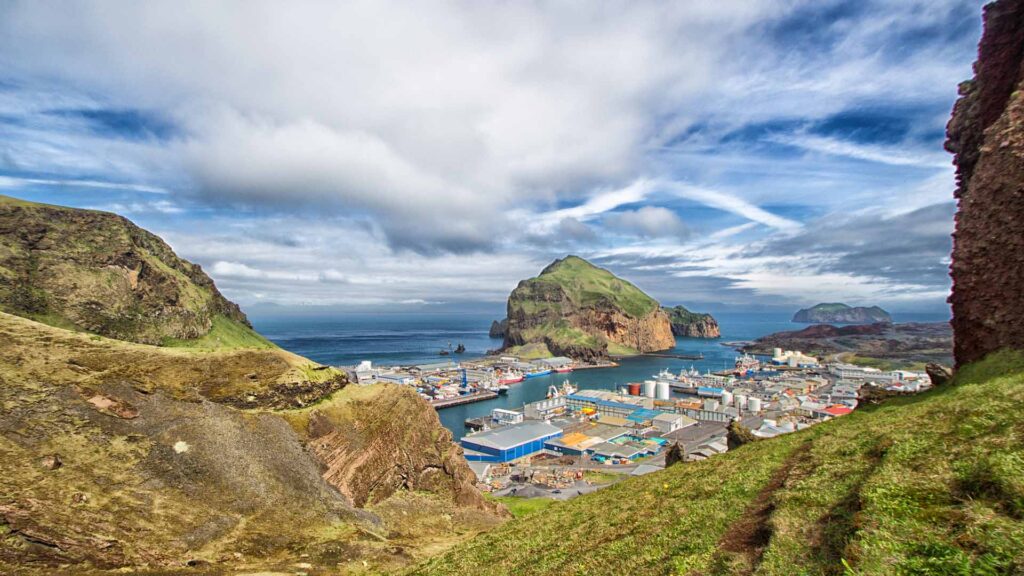
On Monday, July 16, 1627, the bandits attacked The Westman Islands. Three ships were seen to the south of the islands early that day, heading for the islands. People in the Westman Islands were terrified when they saw the ships, as the people had heard of the turkish abductions in Grindavík and elsewhere in the country. So, they had set up defenses at the harbor. On the other hand, the pirates sailed past the port, south along the island, and they went ashore at Ræningjatangi, thus surprising the islanders. Ólafur Egilsson says in his travel book that an Icelander on the crew of the English ship they captured told them where they could land.
Of the pirates, it is said that they went to the marketplace in three groups. Wherever the robbers found people on their way, they seized them, tied them up, and drove them before them down into the village. The same even applied to cattle that came their way. Those who did not get there fast enough were cut down and killed. The people suffered the worst in the upper farms as the pirates arrived quickly and unexpectedly. The people in the lower farms were more likely to escape and managed to see shelter in caves and streams. The Danish merchant ran with the crew of a Danish merchant ship lying in the harbor.
The Pirates Pillaged and Killed
The pirates stayed for three days in The Westman Islands, based in Ræningjaflöt in Lyngfellisdalur valley. Those arrested were bound on hands and feet and kept in Danish storehouses. Those who resisted or were not considered sellable were killed. Those who escaped captivity tried to flee to the mountains but were chased down. Many saved their lives by climbing the cliffs. The islands’ people hid in various places, including in Hundraðmannahellir cave and Fiskhellar caves. It is believed that around 200 people got away with it.
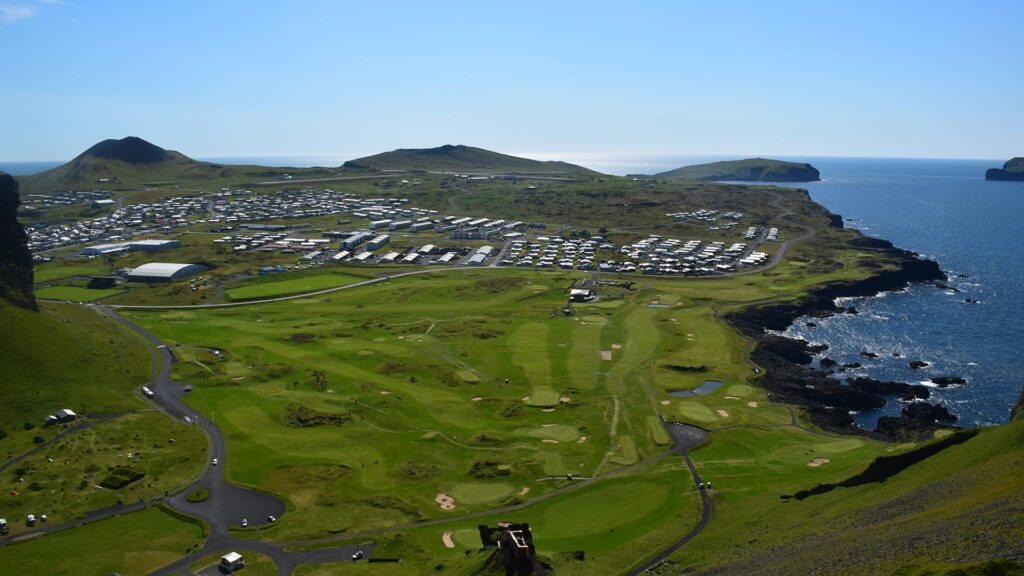
The bandits burned the Landakirkja church after stealing the ornaments. Folklore says that the church bells were hidden in a small cave, and one is still in use in Landakirkja. There were two priests on the islands, and one of them, Reverend Jón Þorsteinsson, was one of the 34 believed to have been killed in the robbery. At the same time, the other, Reverend Ólafur Egilsson, was handcuffed and taken out to a ship with his wife, who was almost 9 months pregnant, and their two children.
Life in the Barbary
The voyage to Barbary was undoubtedly difficult for the prisoners, and some died. However, it does not seem that the people were mistreated. Ólafur Egilsson states explicitly in his Travel Book that when his wife Ásta laid down on a bed and gave birth to a child at sea, the Turks showed great care to the child.
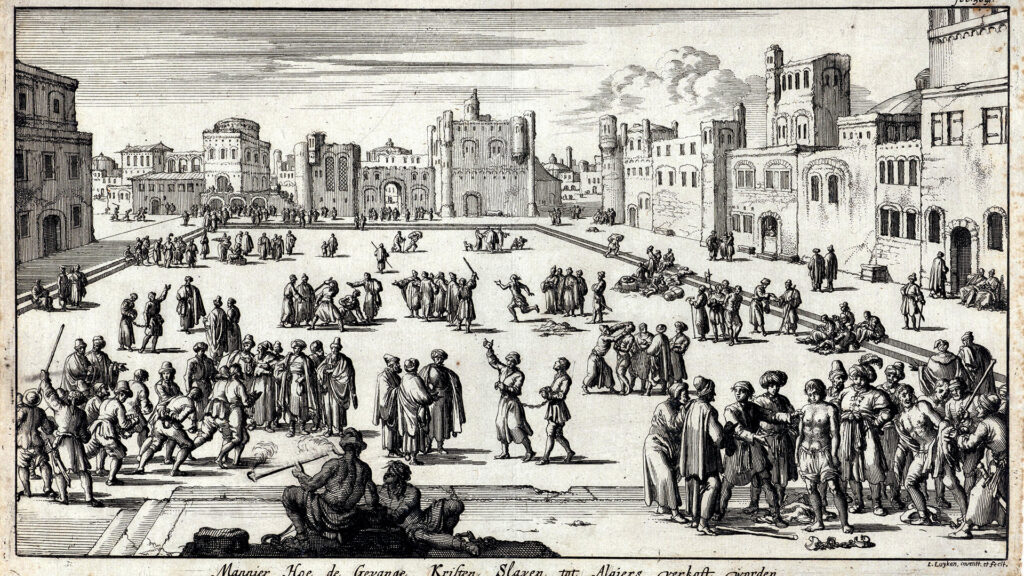
When he came to Algiers, the mayor (“the king,” as Ólafur called him) chose those he wanted for his share, while the others were sold at auction, and not everyone got a great place to stay. About thirty died in the first month after arriving in Algiers. Some soon abandoned the Christian faith, especially children and young people, and became Muslims. However, in 1635, about 70 adult Icelanders in Algiers still adhered to the Christian faith.
Slavery in Barbary
A few letters written by captives reached Iceland. Guttormur Hallsson, a captive from the East Fjords, said in a letter from Barbary in 1631: “There is a great difference here between masters. Some captive enslaved people get good, gentle, or in-between masters. But some unfortunates find themselves with savage, cruel, hard-hearted tyrants who never stop mistreating them. They force them to labor and toil with scanty clothing and little food, bound in iron fetters, from morning till night.”
Return to Iceland
Ólafur Egilsson was set free in Algiers to raise money to pay the ransom. He eventually made it to Copenhagen. The fundraising was slow.
On two occasions, those carrying the ransom to Algiers betrayed the captives and used the money to purchase goods they traded back in Europe. A letter describes the pain:
“… to know that those who have been here twice to Algiers with our ransom money have used it instead for trade. To make a profit for themselves, and have stolen our liberty, for they never admitted that they could free anyone or even that they were here to do so. Instead, they told us to petition our gracious master, the King, in the name of God, for our freedom. Then they filled simple-minded, poor fellows with fair words and went on their way, one with hides, another with chests of sugar, leaving behind them only the smoke of their lying words”.
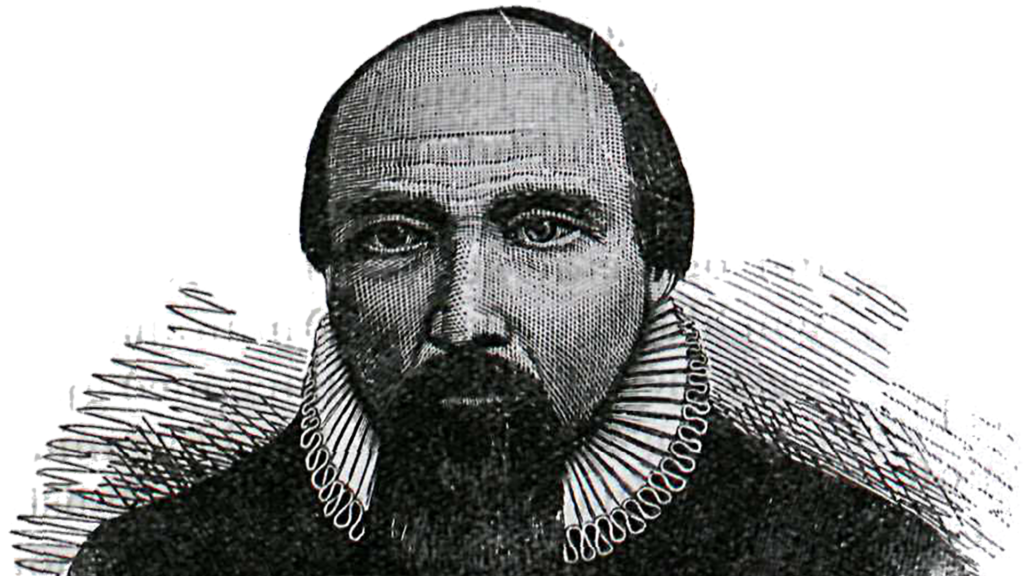
Money was collected in Iceland and Denmark to try to buy the prisoners free, and in 1636 a ransom was paid for 34 enslaved people in Algiers, and they set off for home. Six died on the way, and one remained, but 27 arrived in Iceland, including Guðríður Símonardóttir from Westman Islands. When they came to Copenhagen, Hallgrímur Pétursson had been recruited to retrain the captives in Christian studies. Guðrún and Hallgrímur later married.
A few others made it back to Iceland using other methods. In 1645, a ransom was paid for 8 people who made it back to Copenhagen. In total, 50 individuals got their freedom, but not all returned to Iceland.
Legacy of The Turkish Abductions
In Iceland, the Turkish abductions are viewed as a significant event that is still often discussed. Still, outside of Iceland, the event is practically unknown. Multiple detailed works were written about the Turkish abductions at the time; a major one was Ólafur Egilsson’s narrative (The Travels of Reverend Ólafur Egilsson). It was translated and published in English in 2008. The Turkish abductions were viewed as a punishment from God for Iceland’s “sinful” lifestyle. They are the only armed expedition against Iceland in modern times that has resulted in casualties.

